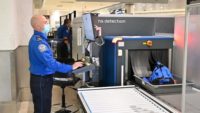Miami International Airport upgrades incident logging system

Image courtesy of Miami International Airport
The nerve center at Miami International Airport (MIA) is its Airport Operations Center (AOC) which operates around the clock, monitoring activity, responding to safety and security incidents, disseminating information and responding to requests from stakeholders throughout the airport. An essential daily task for the AOC team is incident logging, with approximately 70 detailed logs being created each day, and that number set to rise as a result of internal process changes within the department.
Rupen Philloura is the Director of Terminal Operations & AOC at Miami International Airport and he explains: “The MLS logging system was a 25-year-old custom built application. It was familiar for our operators to use, but it was unwieldy, unreliable, and inefficient. With logging being such a critical and growing aspect of our day-today operations, we needed to upgrade to a state-of-the-art unified platform.”
To upgrade incident logging and create more efficiency among staff, the AOC chose an enterprise incident management system, called Situator from Qognify.
Today, the AOC has six Situator-powered stations from which operators monitor the airports Honeywell/EBI fire alarm and Matrix access control systems, as well as its extensive surveillance camera network.
Philloura describes the process: “When an alert is raised, the operator must follow a strict set of procedures for that specific event, this might simply be resetting an alarm remotely, or the dispatch of maintenance personnel. Incidents and subsequent actions need to be accurately documented for regulatory compliance purposes, but also to help us to learn and improve how we deal with incidents and events.”
Replacing manual entry, the system now automatically populates and logs specific information relating to an incident, saving operators time, and ensuring every log is of a consistently high standard. “Together with the input of the operator we are assured that the logs we generate and store are comprehensive end-to-end accounts, that can be quickly and reliably searched, retrieved and reviewed” adds Philloura.
The improved logging has also had a noticeable impact on business continuity and operational efficiency, as well as providing an additional layer of protection to the airport from a regulatory standpoint. With the AOC operating a three-shift pattern, it is vitally important that changeovers can be completed swiftly and nothing is overlooked. Philloura observes:
“When the next shift logs on to Situator they have instant situational awareness, there is no lag in productivity. They can see what has happened and what requires their immediate attention.” He continues: “During their shift they no longer need to repeatedly log into multiple systems to access information. It is all there on the screen at their station,” Philloura says.
The new platform has also reduced the response time to incidents such as door alarms, as well as access requests from tenants and airport employees, by automating the interaction with the Matrix system. With the old MLS system, both use cases needed to be handled manually. The success of the new solution within the AOC has led the airport to begin exploiting its strength as a powerful platform, with higher levels of task automation, ad-hoc forms and reporting, as well as integration with airport specific and non-specific subsystems (made easier by the API driven Situator), such as its access control system and surveillance cameras. It is also evaluating its ability to support the facilities management team in ensuring the statutory maintenance of its extensive network of elevators and moving walkways.
Looking for a reprint of this article?
From high-res PDFs to custom plaques, order your copy today!






